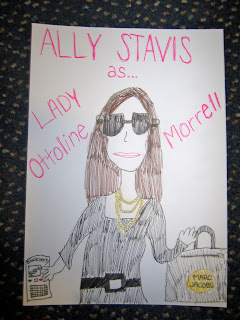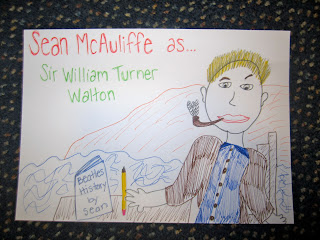1. Labels. Wallace Collection
Share your thoughts on the identification of paintings within the Wallace Collection. Do the titles and artist names feel more integrated with the art when engraved/painted upon frames? Do you prefer object labels (separate labels outside of frames)? What feels appropriate for this collection?
I thought the way that the Wallace Collection labeled their art was incredibly fitting and appropriate for this type of collection. This collection seemed to be more elegant, ornamented and aesthetic so by having the artists names and titles of the paintings engraved within the framing rather than just a simple and unadorned text panel really worked well for this type of museum. Many times I do enjoy and expect text panels since I haven’t been much of an art lover and understand art work better when it is explained to me, but in the Wallace Collection case, I’m very happy there weren’t text panels. It didn’t need explaining and it felt like more of a home-like atmosphere with the paintings just hanging on the wall to decorate your house.
2. Object of Appreciation. Wallace Collection
What object captivates your attention and why?
Jan Fyt’s Still Life With A Page picture really captivated my attention and is no doubt a piece I would like to see again. I would also love to know more about Fyt because all of his paintings seem to be very different and interesting having to do with random animals put together. This caught my attention because of how weird it is in all honestly. It’s a table with the most random objects put together like a lobster, a monkey, a dog or cat, a lot of fruit, birds and many other things that I couldn’t even pick out myself. I haven’t seen a painting this randomly put together and I thought it was incredibly intriguing. I want to know what went through his mind to put together a painting like this one.
3. Object of Excessive details/ornamentation Wallace Collection
What object either intrigues or disgusts you based upon ornamentation (ornate or lavish detailing)
There were many objects that intrigued and disgusted me but if I had to pick one I would pick the Pair of Ewers porcelain vases. I just thought these were incredibly over ornamented. I don’t see it necessary to put a million little “ewers” or flowers covering the entire vase. I think it could have the same, if not way better, beauty and aestheticism if there were a few flowers placed strategically on the vase and a more simple or less elaborate handle. I just don’t like things that are this showy and embellished, I prefer a lot more simple pieces that aren’t overwhelming.
4. Favorite Museum
Please tell me your favorite Museum experience and why?
I find this to be an incredibly hard question because I really did enjoy all of our museum experiences but if I had to pick one I would say the Saatchi Gallery. I just thought these exhibits were absolutely amazing and definitely unlike anything I have seen before. They were so different, amusing and a breath of fresh air. This museum had such diversity and I wouldn’t have been able to classify this museum in one category like I could potentially do for many of the other museums. Additionally, this was my favorite museum experience because this was the only museum where I would stand in an exhibit with friends and speak about each piece individually and what we thought the piece represented. We were able to bounce ideas off of each other and laugh at what I thought something was or how my friends interpreted a piece.
5. Museum Interest
Do you have a greater interest in visiting Museums after taking this course? Were you previously intimated by art? Do you have a greater interest in museum branding / design (logos, labels, mapping, graphics)?
Being honest, I really wasn’t looking forward to this class. I didn’t want to visit a new museum every single week, analyze paintings or logos, answer questions about the museum or really do anything related to museums. I have never been a museum lover because I tend to get bored and very ancy. But now, I can tell you in all honestly that I absolutely have a huge interest in visiting museums and have a way larger appreciation for art. Like I’ve said earlier, I have never been one interested in art so of course I was intimidated by it because I always felt like an idiot when I couldn’t appreciate the art or understand what the artist was trying to show us. I know understand that I don’t need to know a lot about art to enjoy and appreciate it. I can just go to a museum and look at the art and appreciate it for what it’s worth. And now, through this course I have learned that there will always be at least one or two things in a museum that will interest me and make me think. I know that when I go back to the states I will be visiting more museums that I have in the past, no doubt.
6. Any additional comments
Feel free to share any additional comments...
I just want to say how much I really have enjoyed this class and how much I have learned about art and branding. I never thought I would be taking a class like this but couldn’t be happier that I did. So I just want to thank you so much for allowing me to have the opportunity to visit all of these museums and have a different experience tha



























